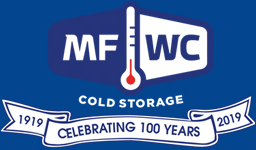Since the late 1800’s, ice companies and freezer warehouses have allowed consumers to take advantage of commercial cold storage and the nutritional quality of frozen foods. Today, freezing foods is one of the most common ways of preserving nutrition for extended periods of time alongside canning, drying, salting, and pickling. In fact, freezing food is one of the most effective ways of storing without significantly altering the structure of proteins, dietary fibers, carbohydrates, fats, and micronutrients. Minnesota Freezer Warehouse Company offers state-of-the-art cold storage in Austin, MN, and promotes the continued accessibility of quality frozen foods that are both nutritious and delicious.
Our climate-controlled warehouses provide dry storage, refrigeration, and freezing on a commercial scale. We provide preserved foods to our local communities in South Central Minnesota in addition to shipping quality products on a global scale.
Without the freezer technology we have today, many foods wouldn’t be available in the supermarket at the peak quality they offer in frozen conditions. A large part of the maintained quality of frozen foods is thanks to what happens to bacteria and other dangerous microorganisms when they’re frozen.
Food bacteria is the number one cause of exponential decreases in food quality in storage above freezing temperatures. Our cold storage warehouses keep frozen foods at temperatures between -20º F and 32º F, an optimal temperature range to prevent bacteria growth and avoid “freezer burn” damage.
Bacteria, mold, and other microorganisms that reduce food quality thrive in temperatures between 40º F and 140º F and can remain active in temperatures as low as 30º F, which is why food can still spoil in the refrigerator.
Freezing foods prevents the growth of bacteria and other microbes because it essentially puts them in stasis.
When bacteria, yeast, mold, and other microorganisms are put into temperatures below freezing, they cannot multiply, but they aren’t killed. Those microbes are still in frozen foods that are thawed out, and as soon as they’re warmed up, those little critters can start to multiply and begin the gradual reduction of food quality.
The freezer storage MFWC provides kills certain microorganisms, including the dangerous trichina parasite, but most bacteria and other microbes are simply put into pause mode. Continued freezer storage is a highly effective way of maintaining food quality for long periods of time, and our cold storage warehouses help a wide variety of food groups retain nutrition, flavor, texture, and overall quality.
For more information about our services and to learn about our cold storage in Austin, MN, contact Minnesota Freezer Warehouse Company at (844) 373-1477 today.
